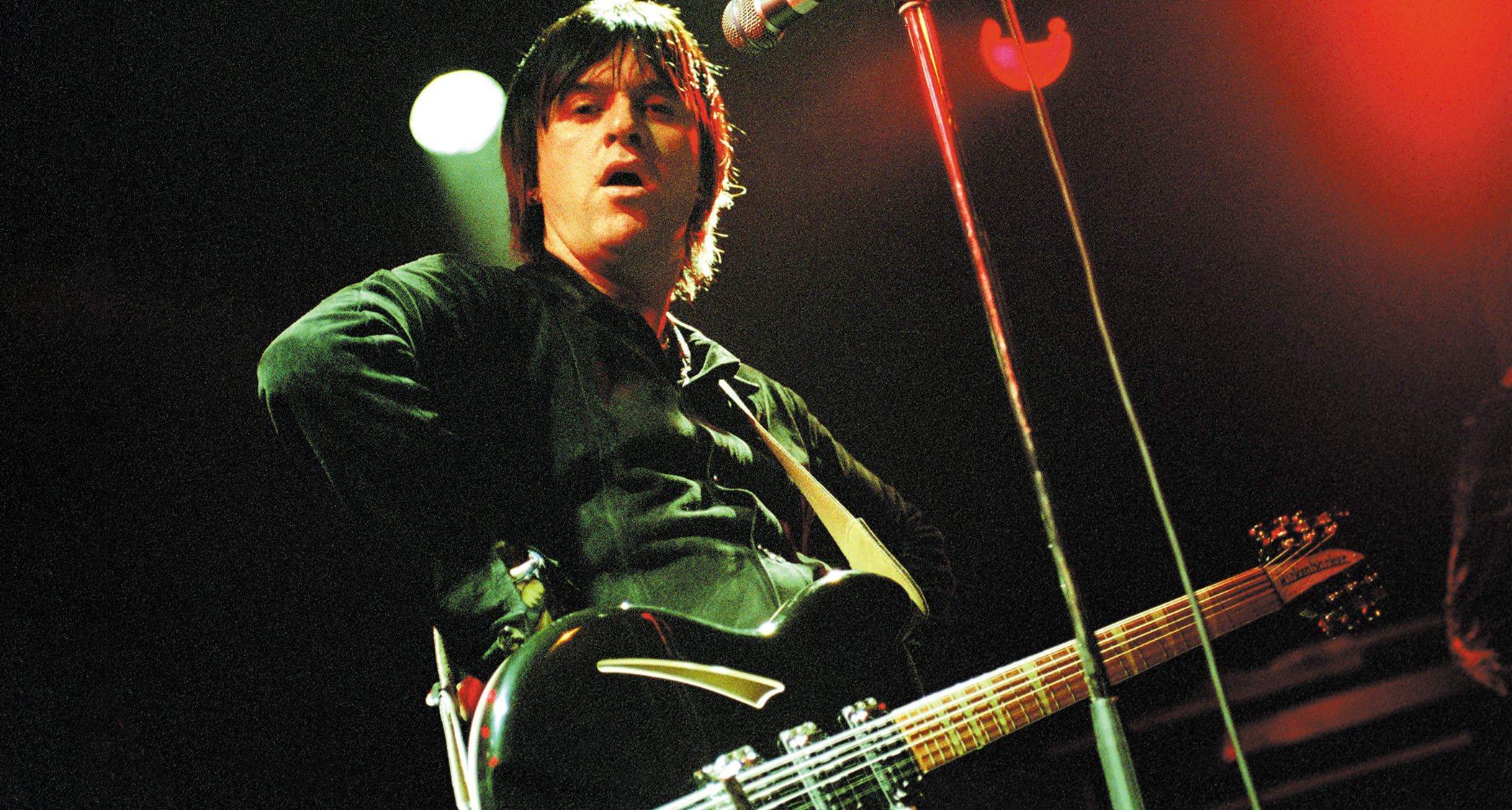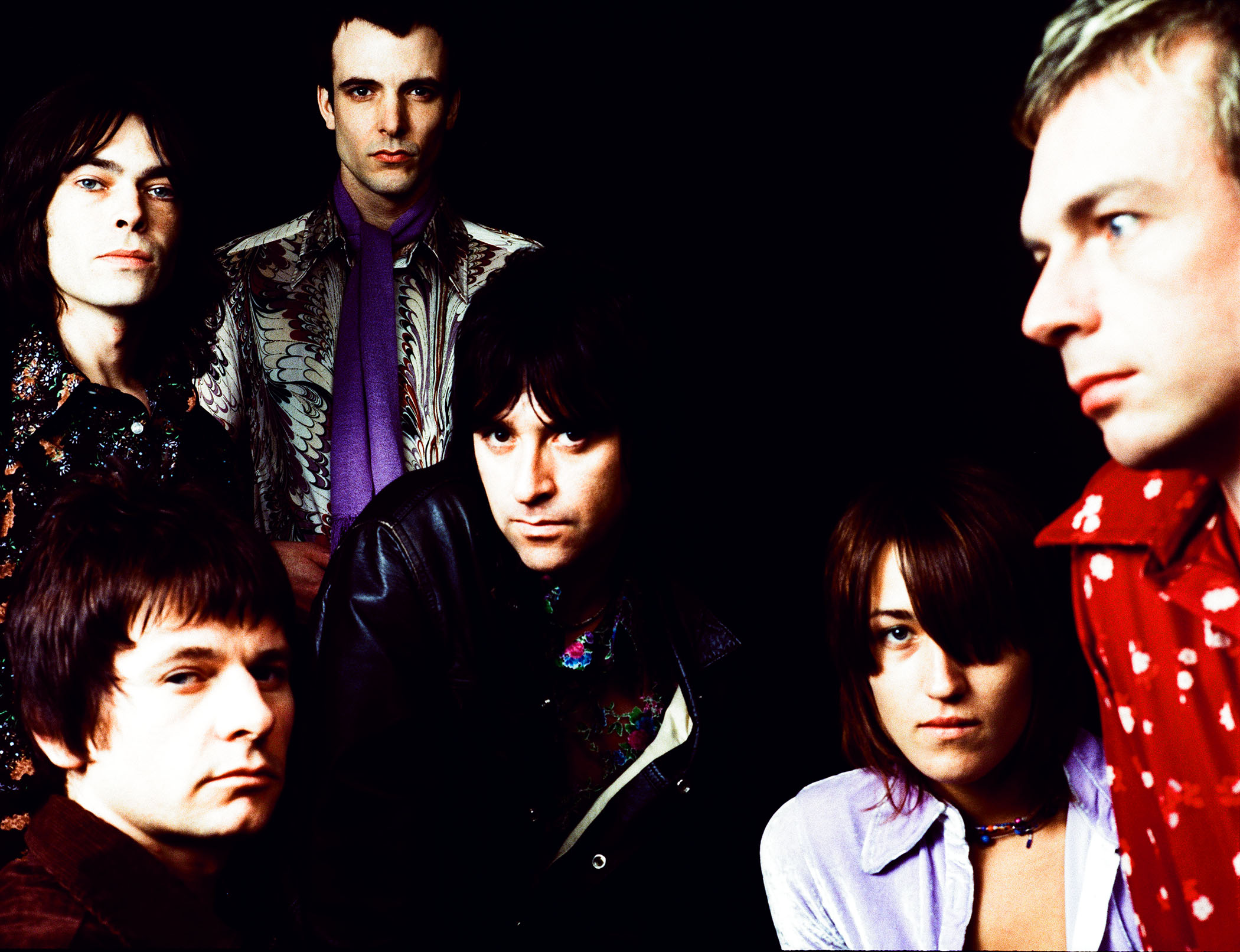
There was something old-school about the way Johnny Marr assembled the Healers. He met Zack Starky at a Who gig at Madison Square Garden. Noel Gallagher’s recommendation put him in touch with Alonza Bevan, ex-Kula Shaker, on bass guitar. Chemistry was what he was looking for.
Marr let the fickle finger of fate pick the players, recruiting Liz Bonney on percussion, Lee Spencer on synth, and Adam Gray on guitar to lend tracks like InBetweens a skronky, oily blues vibe. It just happened.
But the writing and recording process the band’s sole studio album, Boomslang, which was released in 2003 and recently reissued with an expanded set of tracks, was very much of its era. Boomslang was driven by modernity, borne of the union of synth and electric guitar, its sound steered by technology.
Sharing his memories of the Boomslang sessions with MusicRadar, Marr recalls a time when digital technology was revolutionising what was possible in the studio, and that he and the Healers were very much there for that.
“As a band nearly all of the Healers were very into technology and synthesizers,” he says. “I was super into guitar technology, and still am. I love guitar technology and where that’s going. But this idea of electro blues and the glam thing, that was kind of a foundation for me, Zak and Alonza Bevan.
“We would make sure that the grooves could have been done by a band in the ‘60s or ‘70s, but it wasn’t a retro thing. That was very much in the air in the early 2000s, this sort of marriage of the retro with the digital age.
“You see that in the fashion and in the record covers of that time. We were a lot about that, and how it shaped the sound. I was buying up every little bit of equipment that I could get. Then trying it out and sometimes getting it wrong, and sometimes getting it right.”
Boomslang would be Marr’s debut fronting a band. He would also be in charge of production. Having worked with the likes of John Porter and Stephen Street with the Smiths, he had served his “apprenticeship”.
He knew how to make a record. His experience of working with Bernard Sumner on Electronic showed him what was possible when a guitar shares space in the mix with synth.
“I’d learned how to produce records with The Smiths, and everyone in the Healers was very capable,” says Marr. “I was working very closely with James Spencer, the engineer at the time, who I’d worked with in Electronic. I’d made three albums in Electronic with Bernard Sumner, so I knew about putting guitars and synthesizers together with so many things by then.
“I got a real apprenticeship from starting out with The Smiths all the way through Electronic, The The, and working with James Spencer. In my own studio I’d spend 14 or 15 hours every day, seven days a week, for years through the Electronic times making records with guitars and synths and drum machines. So I always kind of knew how to do it.”
Forest Edge, where Boomslang was tracked, was not your typical studio. This was “a house in the trees” where the band, all six of them lived. There’s no getting around it, this was a hippie kind of arrangement, but it served a broader purpose.
This communal redoubt established a firewall between the band and what was going on in the outside world. The tools at their disposal were late 20th-century, early 21st, yet the vibe was akin to the ‘60s and early ‘70s. They were free to experiment.
“I was leaning into everybody. I would bring a song into the studio and we would just jam it out,” says Marr. “Believe it or not, that isn't something that I do very often. I usually have a pretty strong picture in my mind about arrangements and how the band should do things. For the Healers I was more open in that respect. We would take these versions of songs and then give them to Lee Spencer, he would chop them up, put them in samplers and do lots of programming.”

That’s how All Out Attack came together. Marr is not sure why it never made the final cut for the original release but is included in the 2024 reissue. “It’s one of the strongest things we did,” he says.
That same approach was used to write Bangin’ On and You Are The Magic. Others came together more traditionally, like Down On The Corner. “It was one of those songs where the melody and the words came at the same time,” says Marr. “It’s almost Kinks-y.”
Then there were the accidents, moments captured on tape that ended up making the record.
“There’s also a little atmospheric thing called Something To Shout About which I improvised in between doing takes on something else,” says Marr. “Just the sound I had in the headphones, playing Rickenbacker. I started playing and singing and the song just came together. We left it on the album as this little vignette.”
The Healers never put out another record after Boomslang. But its legacy can be heard in Marr’s solo work. The experience of working with guitars and percussion then marrying this with bleeding-edge tech from the electronic music scene has served him well.
During the writing process for 2022 solo album, Fever Dreams Pts 1-4, Marr had some 30 synth plugins he had to get acquainted with. He’d use an Arturia Spark drum machine. Tracks like Ariel came together from pairing “electro sounds” with a riff he might have done with the ‘80s.
Much of it came from him enjoying the act of programming stuff, and following his musical curiosity – just was like the Boomslang era only this time going it alone.
Looking back, the Healers might have been led by Marr, but it was the band’s idea to call it “Johnny Marr and the Healers.” Marr always saw it as more of a democracy, a proper band whose horizons were being broadened by technology.
“It’s a mixture of a jam band, me as a singer-songwriter, and programming with late ‘90s early 2000s dance music technology of the day,” he says. “Plenty of Moogs, Korg 101s and Space Echo. Often with things that happen in music, the technology of the day steers you. It was the early days of hard disk recording, trying to stretch things out.”
- Boomslang is out now on all formats via BMG, with the deluxe edition expanded to include the previously unreleased The Way That It Was, All Out Attack, Get Me Wrong, Don’t Think Twice It’s All Right, A Woman Like You, You Are The Magic (Union Mix) and Get Me Wrong (Instrumental Version).







